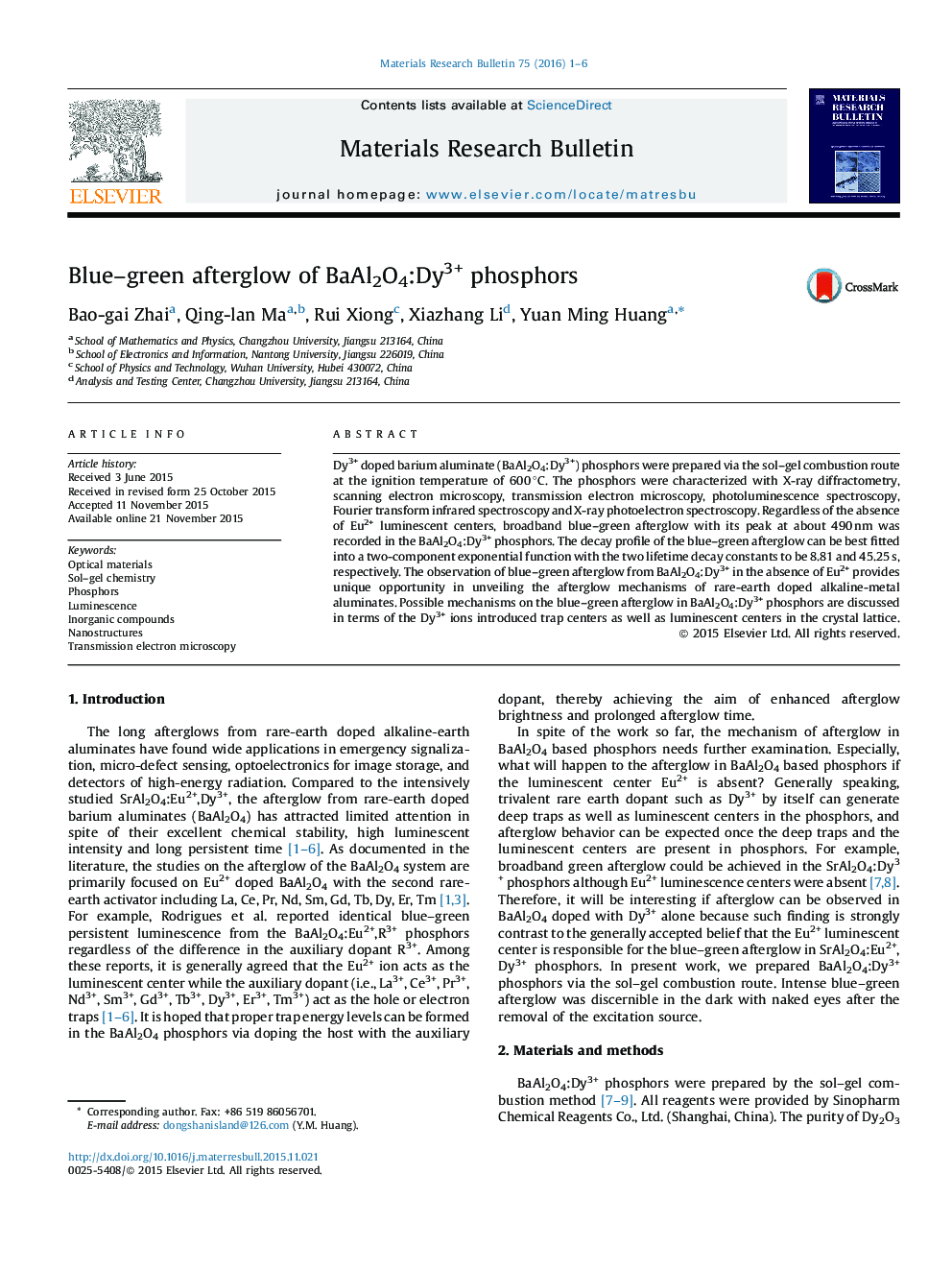| Article ID | Journal | Published Year | Pages | File Type |
|---|---|---|---|---|
| 1487466 | Materials Research Bulletin | 2016 | 6 Pages |
•Afterglow can be achieved when Eu2+ is absent in the DyAl2O4:Dy3+ phosphors.•The afterglow of DyAl2O4:Dy3+ phosphors is discernible to naked eyes for minutes.•Dy3+ introduced trap centers are believed to be responsible for the afterglow.
Dy3+ doped barium aluminate (BaAl2O4:Dy3+) phosphors were prepared via the sol–gel combustion route at the ignition temperature of 600 °C. The phosphors were characterized with X-ray diffractometry, scanning electron microscopy, transmission electron microscopy, photoluminescence spectroscopy, Fourier transform infrared spectroscopy and X-ray photoelectron spectroscopy. Regardless of the absence of Eu2+ luminescent centers, broadband blue–green afterglow with its peak at about 490 nm was recorded in the BaAl2O4:Dy3+ phosphors. The decay profile of the blue–green afterglow can be best fitted into a two-component exponential function with the two lifetime decay constants to be 8.81 and 45.25 s, respectively. The observation of blue–green afterglow from BaAl2O4:Dy3+ in the absence of Eu2+ provides unique opportunity in unveiling the afterglow mechanisms of rare-earth doped alkaline-metal aluminates. Possible mechanisms on the blue–green afterglow in BaAl2O4:Dy3+ phosphors are discussed in terms of the Dy3+ ions introduced trap centers as well as luminescent centers in the crystal lattice.
Graphical abstractFigure optionsDownload full-size imageDownload as PowerPoint slide
